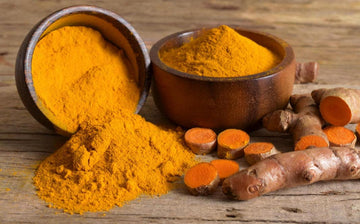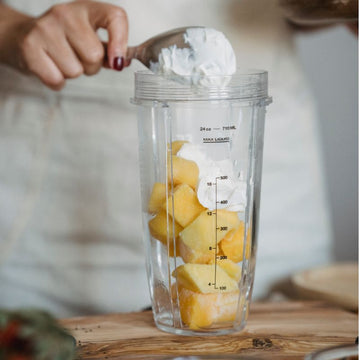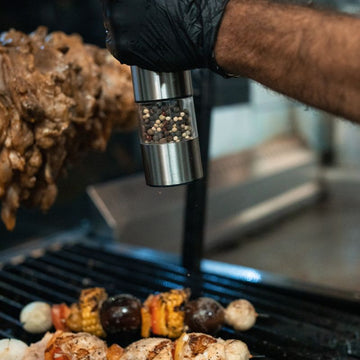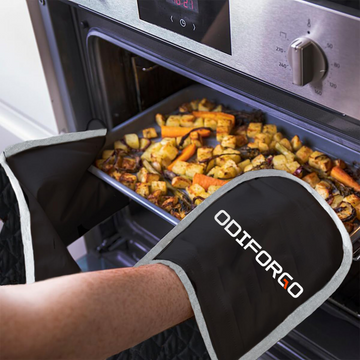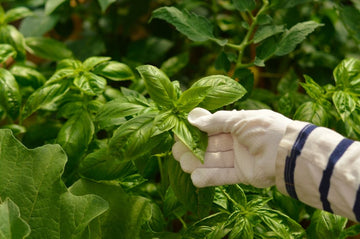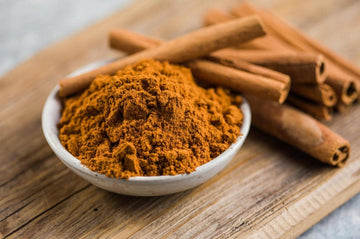If you’ve ever found yourself staring at two very different-looking bunches of basil at the store—one with soft green leaves, the other with dark stems and sharper edges—you’re not alone. Recipes often call for “basil” without saying which kind, and that can be confusing when the flavor and use of each variety are so distinct.
In this article, we’ll break down the differences between Thai basil and the more commonly known sweet basil (often just labeled as "basil" in Western recipes). From taste and appearance to how each one behaves in cooking, we’ll help you figure out which basil works best for the dish you’re making.
What exactly is basil?
Basil is a member of the mint family (Lamiaceae), with dozens of varieties grown around the world. While most people are familiar with sweet basil—the kind commonly used in Italian dishes—other varieties like Thai basil or holy basil offer entirely different flavor profiles and culinary uses. Despite sharing the same botanical family, they aren't interchangeable in taste or texture.
Thai basil

Thai basil (Ocimum basilicum var. thyrsiflora) is a staple in Southeast Asian cooking, especially Thai and Vietnamese cuisines. It has narrow, pointed leaves with purple stems and a spicy, licorice-like aroma. Compared to sweet basil, it holds its shape better under heat, making it ideal for stir-fries, soups, and curries where the herb is added during cooking rather than as a garnish.
Thai basil has a bold, peppery bite with undertones of anise. You’ll find it in dishes like Thai drunken noodles, pho, or green curry, where its flavor can stand up to strong spices, chilis, and savory broths.
Sweet basil
When recipes call for basil without any qualifiers, they’re usually referring to sweet basil (Ocimum basilicum), also known as Genovese basil. This variety is softer, both in leaf texture and flavor. It’s slightly sweet, a little peppery, and more delicate overall. It's a core ingredient in Italian cooking, best known for being blended into pesto or sprinkled fresh over pasta, pizza, or caprese salads.
Sweet basil bruises and wilts easily, which is why it’s almost always added at the end of cooking or used raw.
Bonus: holy basil (Tulsi)
-
Scientific name: Ocimum tenuiflorum (also known as Ocimum sanctum)
-
Flavor: Clove-like, earthy, slightly bitter
-
Texture: Coarser leaves, often slightly hairy
-
Common uses: Herbal teas, Ayurvedic remedies, sacred rituals
Holy basil is rarely used in culinary dishes outside India, where it’s more often consumed as a medicinal herb. It’s a sacred plant in Hindu culture and known for its adaptogenic properties—claimed to help with stress, immunity, and inflammation. While not a culinary substitute for Thai or sweet basil, it’s worth mentioning for its cultural and herbal significance.
Thai basil vs. sweet basil
When comparing Thai basil and sweet basil, it helps to understand not just their flavor but how they behave in the kitchen, how they interact with other ingredients, and what cultural roles they serve.

Flavor & aroma
The most immediate difference is taste. Thai basil has a pronounced, spicy character with strong notes of anise or licorice. It’s sharp, assertive, and fragrant—perfect for dishes where the basil is meant to cut through heat or richness. In contrast, sweet basil (the kind typically used in Western cooking) is more mellow. It has a peppery bite, but it leans sweet and herbaceous, with a softer presence overall. When raw, sweet basil is more delicate on the palate, while Thai basil retains its pungency even when uncooked.
Cooking behavior
Thai basil is far more resilient in hot environments. Stir it into a boiling pot of pho or toss it into a sizzling curry and it won’t wither away instantly. This makes it ideal for dishes that are cooked at high temperatures or require longer simmering times. Sweet basil, however, wilts fast and can become bitter when overcooked. It’s best added at the end of cooking or used fresh, such as torn over a Caprese salad or mixed into a pesto.
Leaf texture & color
Visually and texturally, the two are distinct. Thai basil leaves are narrower, slightly glossy, and have a firmer structure, with reddish-purple stems that give it an ornamental edge. The firmness means they hold their shape better during cooking. Sweet basil leaves are broader, soft, and easily bruised. They often have a matte finish and bright green stems. The tenderness of sweet basil is part of what makes it so beloved in raw dishes—but also what makes it perish quickly.
Cultural uses & origins
Thai basil is central to Southeast Asian cuisine, particularly in Thai and Vietnamese cooking. You’ll find it garnishing bowls of pho, mixed into green or red curries, or stir-fried with chilies and garlic. Sweet basil, on the other hand, is synonymous with Italian food: it’s in every classic pasta sauce, blended into pesto, and layered on top of Neapolitan pizzas. Substituting one for the other might not ruin a dish, but it would dramatically alter its personality.
Storage & longevity
Thai basil is surprisingly hardy. If you store it in a jar of water on your counter or loosely wrapped in the fridge, it’ll keep for several days without significant wilting. Sweet basil, however, is delicate. It’s notorious for blackening or going limp within a day or two, especially if exposed to cold or moisture. To extend its life, it’s often best stored at room temperature in a bit of water, like a bouquet.
Substitution logic
Can you use one in place of the other? Technically, yes—but it depends on what you’re cooking. Thai basil in a tomato pasta sauce would overpower the dish with licorice-like intensity. Sweet basil in a Thai stir-fry might fall flat, especially when mixed with other bold ingredients like fish sauce, chili, or lemongrass. If you’re in a pinch, and trying to mimic Thai basil, a blend of sweet basil and a pinch of star anise or fennel seed can offer a similar profile. But there’s really no perfect swap.
How to choose between Thai basil and sweet basil
Choosing between Thai basil and sweet basil largely depends on what you’re cooking — but it can also reflect your personal palate and how much you want the basil to stand out in the final dish.
Consider the cuisine
The simplest rule: match the basil to the cuisine. If you’re making Thai, Vietnamese, or other Southeast Asian dishes — like Thai green curry, pho, or stir-fried basil chicken — go with Thai basil. Its sharp, peppery, anise-like flavor holds up to spicy broths and intensely seasoned sauces. On the other hand, if your dish has roots in Italian, Mediterranean, or French cooking — such as pasta sauces, pestos, pizzas, or salads — sweet basil will be more appropriate and authentic to the flavors of the dish.
Cooking method
Will the basil be cooked or served raw? Thai basil does better with heat — it doesn’t wilt immediately and retains its structure and aroma, making it a good choice for dishes that simmer, stir-fry, or boil. Sweet basil is delicate; it’s best added at the end or used fresh, where its mildness and softness shine.
Flavor preference
Thai basil brings intensity. If you like assertive, spicy herbs with licorice undertones, Thai basil will deliver. But if you want the basil to blend in more gently with tomatoes, cheeses, or oils, then sweet basil is your pick. Some find Thai basil too pungent for light dishes; others find sweet basil too subtle for spicy meals. Neither is better — it’s just about preference.
Availability and freshness
In Western grocery stores, sweet basil is much more common. Thai basil might only be found at Asian supermarkets or farmer’s markets. That said, Thai basil tends to last longer once harvested. So if freshness is an issue, and both are available, Thai basil might give you a longer window to use it up.
Presentation
If you care about aesthetics, consider the look of the leaves. Thai basil’s purple stems and firmer, pointed leaves give a more sculptural look to dishes. Sweet basil, with its rounder, bright green leaves, has a softer and more familiar appearance, especially in Western plates.
Final thoughts
Thai basil and sweet basil aren't interchangeable — they serve different purposes in different dishes. If you're cooking Southeast Asian recipes, Thai basil is usually the right pick. For Italian or Mediterranean meals, stick with sweet basil.
Understanding the difference isn’t about being picky; it’s about making the dish work the way it’s supposed to. Keep both in your kitchen if you cook a range of cuisines. If not, choose the one that fits what you actually make.
